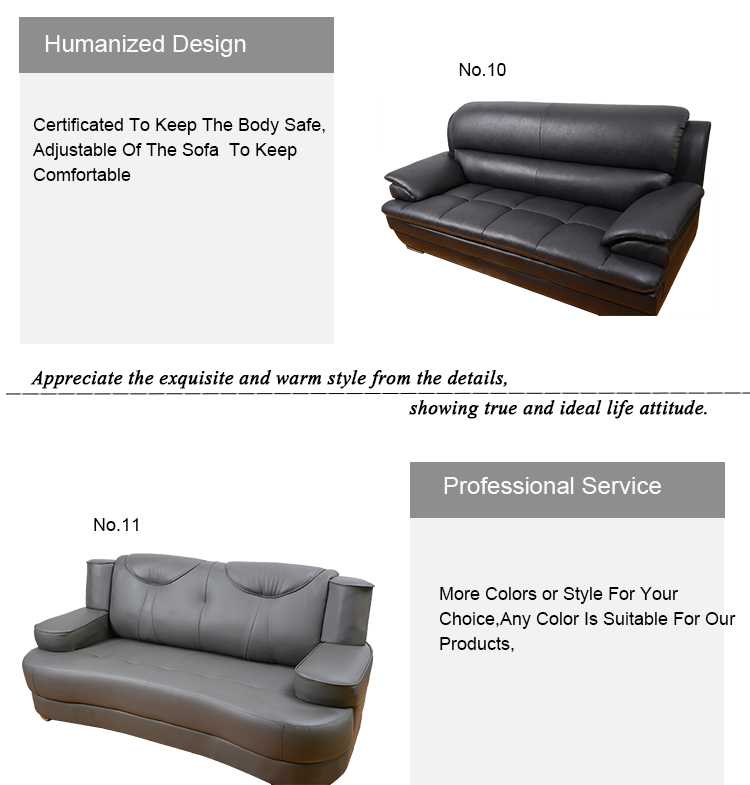Title: Repairing Genuine Leather Sofa: A Comprehensive Guide
Repairing a genuine leather sofa can seem like a daunting task, but with the right tools and techniques, it is possible to restore your beloved piece to its former glory. The first step in repairing a leather sofa is identifying the issue. Common problems include cracks, stains, and wear and tear. Once you have identified the problem, you'll need to choose the appropriate repair method.If the crack is minor, you can use a leather filler or sealant to repair it. However, if the crack is larger, you'll need to take a more drastic measure such as stitching or patching the leather. To remove stains, you can use a mixture of warm water and vinegar or a commercial leather cleaner. For wear and tear, you can use a leather conditioner to soften and rejuvenate the surface.It's important to note that not all repairs are permanent. If the issue persists, it may be time to consider buying a new sofa altogether. However, with proper care and maintenance, your genuine leather sofa can last for many years to come. So why not give it a try? With this comprehensive guide, you're one step closer to restoring your beloved furniture.
Introduction
A genuine leather sofa is a stylish and durable piece of furniture that can enhance the overall look and feel of any room. However, like all other furniture, it is susceptible to wear and tear, including tears, scratches, dents, and cracks. When such damage occurs, it can be disheartening, especially if the sofa is a valuable investment. Fortunately, repairing a genuine leather sofa is possible with the right tools and techniques. In this article, we will provide a comprehensive guide on how to repair damaged genuine leather sofas, from removing stains to filling cracks and restoring the original look and feel of the sofa.

Removing Stains
1、Test for colorfastness: Before attempting to clean a genuine leather sofa, check if the fabric is colorfast by testing a small, inconspicuous area with a damp cloth. If the color transfers to the cloth, the sofa is not colorfast and may require special cleaning methods or treatment.
2、Blot spills immediately: If you notice a spill on your genuine leather sofa, do not rub the stain aggressively as it can spread further and damage the leather. Instead, use a clean, dry cloth or paper towel to blot the stain until most of the liquid is absorbed. Avoid using water or cleaning solutions that contain alcohol or ammonia, as they can damage the leather's finish and cause cracking or drying out.
3、Use a specialized cleaner: Once you have removed most of the spillage, use a specialized leather cleaner designed for genuine leather sofas. Follow the product instructions carefully and test on a small, inconspicuous area before applying it to the entire surface.
4、Dry gently: After cleaning, use a clean, dry cloth or air dryer to gently dry the sofa. Avoid using a hairdryer or any other heat source, as it can cause cracking or melting of the leather's surface.
Filling Cracks
5、Prepare the filler: Choose a suitable filler material that matches the color and texture of your genuine leather sofa. You can use silicone-based fillers, rubberized cement, or even beeswax mixed with honey. Make sure to apply the filler in thin layers and let it dry completely between each layer.
6、Clean the surface: Before applying the filler, clean the damaged area thoroughly with a soft-bristled brush or a magic eraser sponge to remove any dirt or debris. Ensure that the surface is dry before applying the filler.

7、Apply the filler: Using a small brush or your fingers, apply the filler to the damaged area, working from the center outwards in a thin layer. Be careful not to overfill or create lumps or wrinkles in the filler.
8、Allow the filler to dry: Once you have applied the filler, allow it to dry completely according to the manufacturer's instructions. This process may take several hours or even overnight depending on the size of the damaged area and the type of filler used.
Restore Original Look and Feel
9、Buff the surface: After the filler has dried completely, use a soft cloth or buffer to buff the surface gently, working from one end to another in a circular motion. This process will help smooth out any imperfections in the filler and restore the original look and feel of the sofa.
10、Apply conditioning cream: To further protect your genuine leather sofa from future wear and tear, apply a conditioning cream designed specifically for leather furniture. This cream will nourish and moisturize the leather while also helping to prevent cracking and fading over time. Follow the product instructions carefully and apply the cream sparingly to avoid overloading the surface with too much product.
Conclusion
Repairing a damaged genuine leather sofa may seem like a daunting task, but with the right tools and techniques, it is possible to restore your beloved furniture to its original glory. By following these steps for removing stains, filling cracks, and restoring the original look and feel of your sofa, you can extend its lifespan and enjoy it for many years to come. Remember to always take good care of your genuine leather furniture by avoiding harsh chemicals, protecting it from direct sunlight, and keeping it clean and well-maintained.
Articles related to the knowledge points of this article:
Mastering the Art of Tie Knots: A Comprehensive Guide to Tie Knot Tying
Jackets and Down Coats: A Fashion Statement for Winter
Title: Mastering the Art of Korean Necktie Tying: A Comprehensive Guide
Title: Baseball Jacket and Down Jacket: A Fashion Combination that Defines Comfort and Style
Title: Mastering the Art of Tying a Tie: A Comprehensive Guide to Tying a Perfect Bow
Womens Down Pants: Fashion and Functionality in Cold Weather



